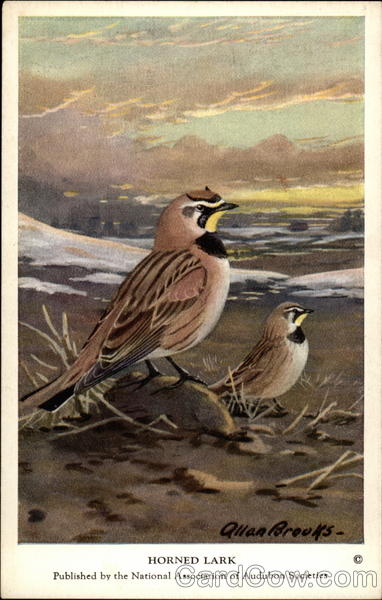Front:
Quan Broufs-
HORNED LARK
Published by the National Association of Audubon Societies
Back:
No. 26 Horned Lark
Length 734 inches
These birds are always associated in our minds
with snowstorms and smiting blasts of winter, be-
fore which they come with wavering, rollicking
flight. They are to be found in small flocks and
scattered companies feeding in fields and road-
ways, or in the vicinity of the seacoast. Often,
when the country is deeply covered with șflow,
they flock about the farms, feeding upon particles
of grain that have been left where cattle and hogs
or other live stock are fed. When disturbed they
take wing, uttering a plaintive, quavering whistle,
and are off seeking other fields. During periods
of excessive cold and snow they my
be found only in open spaces Wood Passers-by.
be seen in small flocks along country roads where
the snow has been broken. Here they pick up
many particles of food loft by the passers-by.
The Horned Lark woodlands, and may
The nest is of grasses and on the ground. The
eggs are three or four, pale bluish-white speckled
with grayish-brown.
Classification: Order Passeres. Family Alaudia.
Scientific name: Otocoris alpestris.
Range: Breeds in the Arctic Zone and Canada and
winters south to the Ohio Valley. Several geographic
races are distributed widely over North America and
southward.
No. 26 from set of 50 Winter Birds of the Northeastern United
States. Published by the National Association of Audubon So-
cieties, 1974 Broadway, New York City. Price per set, in a box,
$1.00 post paid.



